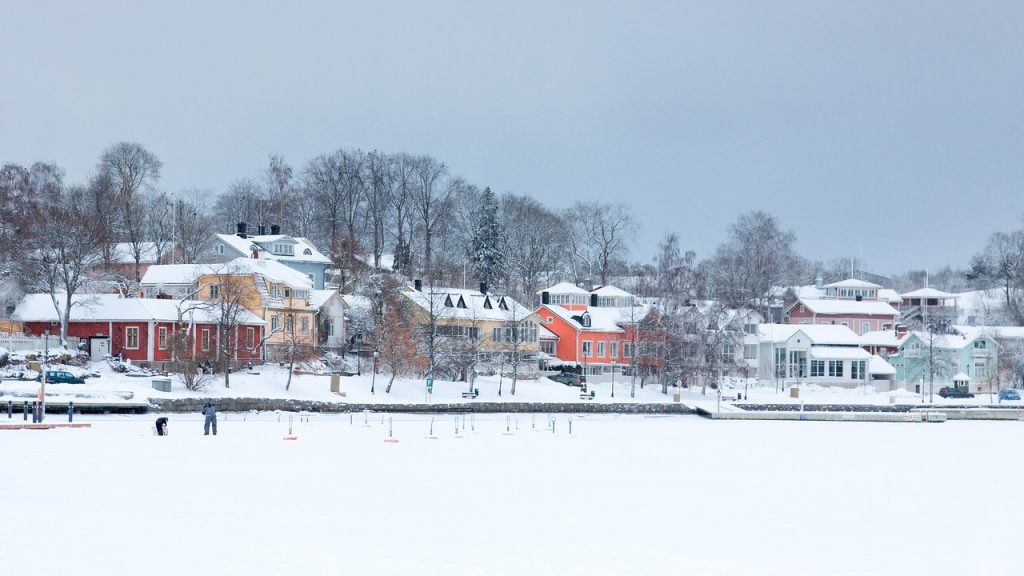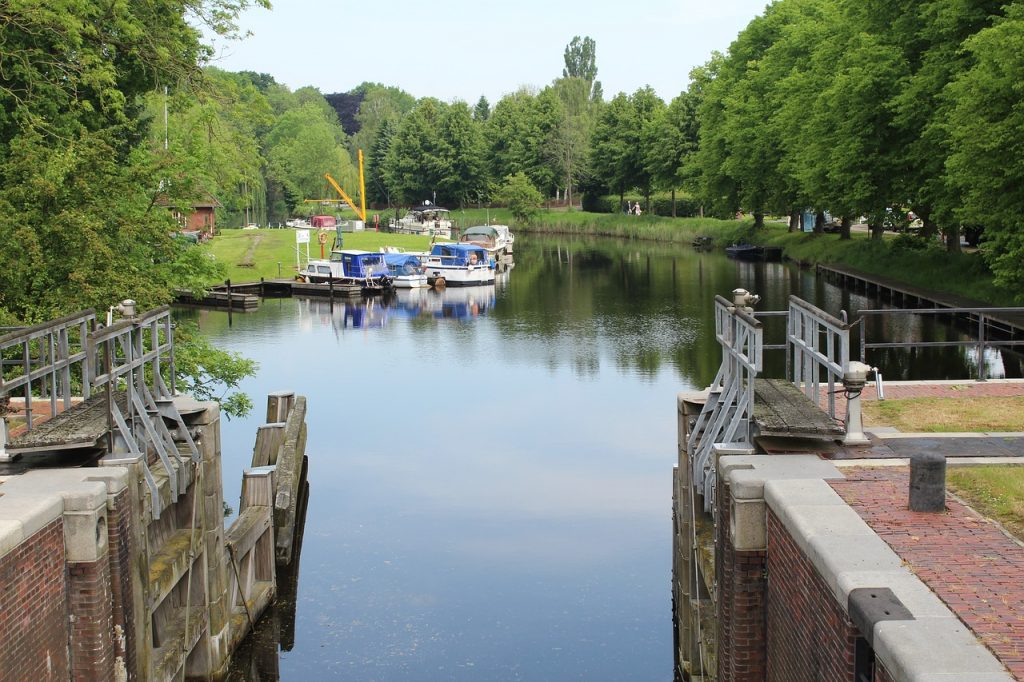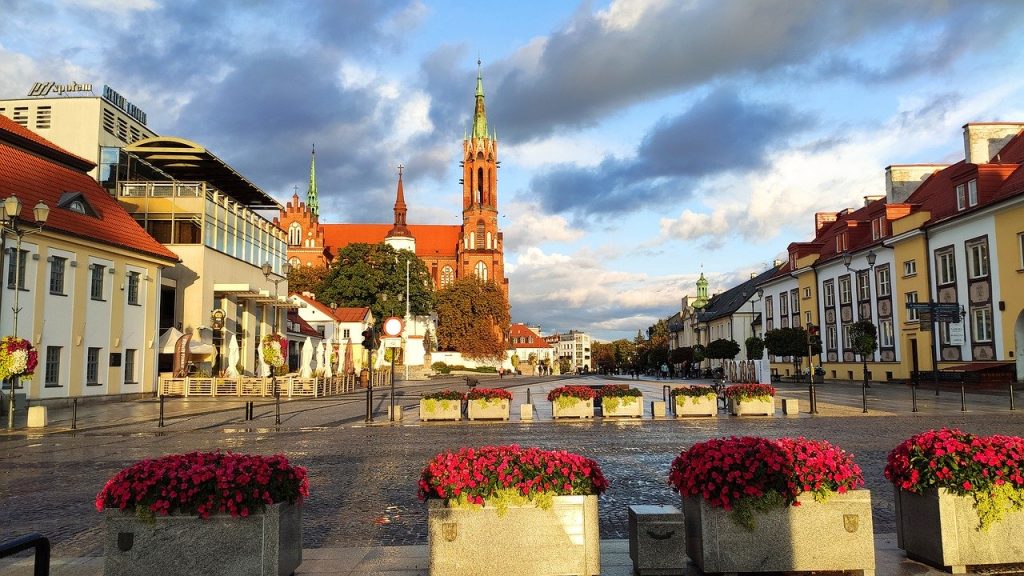Multiculturalism was found throughout the entire Łęczyńsko-Włodawskie Lake District, which used to be inhabited by a mixture of culture, nationality and ethnicity. Each group was distinguished by a different language, customs and traditions by introducing its valuable contribution to Polish culture. To this day, traces of national minorities are visible in the form of historic religious buildings and intangible cultural heritage. Jews from the Mosaic religion, Orthodox Ukrainians (Ruthenians) and Russians, Greek Catholic, Uniates of Polish, Ukrainian and Russian nationalities, Belarusians and Germans, both Catholics and Protestants (Lutherans and Baptists) lived in the Lake District. The dominant group were Poles of the Roman Catholic religion.

Orthodoxy in the Lakeland
In 1596, seven bishops (out of ten dioceses located in the Polish-Lithuanian Commonwealth) joined the union with the Roman Catholic church. Among them was the diocese of Chełm, which included the church in Cyców and Świerszczów. Under the Brest Union of 1596, some Orthodox believers recognized the pope as head of the Church and adopted Catholic dogmas, maintaining the Byzantine liturgical rite. Initially, in Cyców, the church was a Uniate church of St. Archangel Michael, built in the years 1860–1870 in the Byzantine style. From 1875, after the dissolution of the union, an Orthodox church, and from 1918, the Roman Catholic church of Saint’s care Joseph. A similar history has a wooden temple in nearby Świerszczów, whose construction was completed in 1795. After the liquidation of the Uniate bishopric in Chełmszczyzna by the tsarist authorities, the Uniate church was converted into an Orthodox church, and from 1921 to the present it serves as a Roman Catholic church. St. Basil. In the Lakeland there was another Orthodox parish in Dratów, which was founded in the fourteenth century, after destruction it was rebuilt only in 1720. Until 1874 it was a Uniate and then Orthodox temple.
A relatively large number of Ukrainians lived in the eastern part of the Lakeland (Włodawa poviat). In 1931, during the second census of the Greek Catholic and Orthodox religion in the province. there were 213 755 people in Lublin, which constituted 8.7% of the total, but only 3.1% recognized their native language: Ukrainian, Ruthenian, Belarusian or Russian. However, the confession, and even more the native language declared during the census, cannot be the basis for a clear definition of nationality. In 1939, i.e. just before the outbreak of war, according to materials collected by the voivodship administrative authorities in the above-mentioned poviats, Ukrainians constituted 24.3% of the total population. They lived mainly in the countryside and agriculture was their main source of income.
Jews in the Lublin region
Jews constituted the largest national group, except Poles, and settled practically throughout the entire area of today’s Łęczyńsko-Włodawskie Lake District. In large numbers in Włodawa and Łęczna. An independent Jewish community was established in Łęczna shortly after the location of the city, i.e. in the 15th century. In the 17th century, the Łęczyna Jewish community gained the status of the second largest community after Lublin in the region. From the first half of the nineteenth century, Łęczna became an important center of Hasidism, until 1843 being the seat of the court of tzadik Szlomo Jehuda Lejb Łęczner, a student of Jakub Icchak Horowitz from Lublin and Jakub Izaak from Przysucha. The presence of such an outstanding authority having its supporters not only in Łęczna, but also in the entire Lublin region and even in the Kingdom of Poland attracted large crowds of Jews to the town. At that time, Łęczna Jews constituted 64.3% of the town’s total population. In the interwar period, Jews were intensively active in the field of trade, craft and services. During World War II, the Germans established a ghetto and a forced labor camp in Łęczna. About 3,000 stayed here. local Jews and those brought from the Czech Republic and Slovakia. At the turn of October and November 1942, the Germans liquidated the ghetto in Łęczna: they shot 1,000 Jews on the spot. Jews, two large transports were directed to the death camp in Sobibór, the remaining over 200 people were sent to the forced labor camp in Piaski and Trawniki.
The remains of the Jewish community are: Small and Big Synagogue in Łęczna, so-called “Korna’s tenement house”, Ohel at the Łęczna Jewish cemetery on the tomb of tzadik Szlomo Lejba Łęczner, Lapidarium in front of the synagogue building, which consists of fragments of tombstones from the Jewish cemetery, several residential buildings in the Old Town and the house where the rabbi lived before World War II.
In contrast, in Włodawa in the 1920s, there were nine thousand Jews, which constituted 70% of Włodawa. 90% of the trade was in their hands. They had their own schools and social and political organizations. However, they were poor, just like other city residents. In 1939, the Nazis imposed a high tax on the Jewish community. Jews were ordered to wear armbands, and they were forbidden to walk on the sidewalks. In the years 1940–1943 they were forced to work camps and the ghetto. Finally, in 1943, the Włodawa ghetto was liquidated, the Jews were deported to nearby Sobibór, where they were shot or gassed.
The remains of these three nationalities can be seen today in the form of Włodawa monuments:
They belong to this group, among others places of worship: an Orthodox church, a Jewish synagogue and a Catholic church.
- Orthodox church of the Birth of the Virgin
- church of st. Ludwika, the monastery buildings adjoin the church
- Great and Small Synagogue
Festival of Three Cultures
In order to familiarize residents and tourists with the multiculturalism of the region, the Three Cultures Festival has been taking place in Włodawa since 1999. During the festival, concerts and performances take place over three days. The first day is devoted to the tradition of Jewish culture, the second – to Orthodox, and the third – to Catholic. Vernissages, film screenings, theater performances and art workshops take place for three days.
The article comes from the portal: http://www.turystyka-pojezierze.pl/


